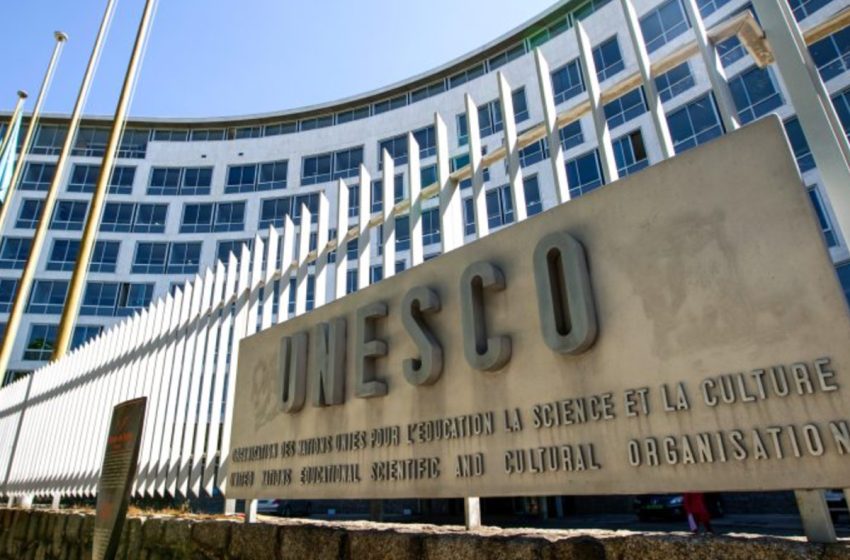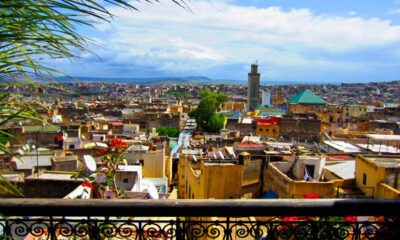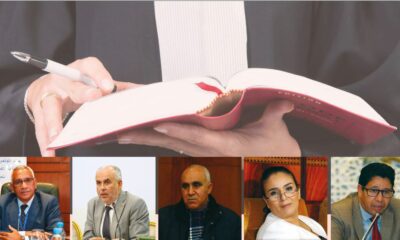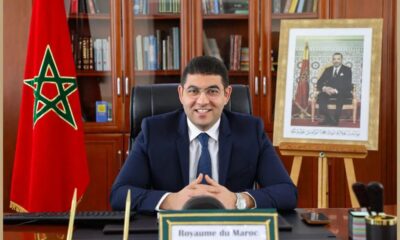Influences
Inauguration of the Exhibition ‘Morocco: A Tradition of Openness and Peace’ at UNESCO
The exhibition ‘Morocco: A Tradition of Openness and Peace,’ highlighting the richness of Morocco’s tangible and intangible cultural heritage, was inaugurated on Tuesday at the headquarters of the United Nations Educational, Scientific and Cultural Organization (UNESCO) in Paris.

Held on the sidelines of the 221st session of UNESCO’s Executive Council, “this exhibition offers an opportunity to discover more closely, through live workshops and a museum display of ancient craft objects, an ancestral know-how passed down through generations by Moroccan artisans—bearers of identity values rooted in the history of the Kingdom of Morocco, imbued with a longstanding tradition of openness and peace,” emphasized Samir Addahre, the Permanent Delegate Ambassador of the Kingdom of Morocco to UNESCO, during the inauguration ceremony.
This singular Moroccan tradition, he continued, is also reflected through an exhibition of artworks and diverse elements of Moroccan cultural heritage inscribed on UNESCO’s lists.
The Ambassador further noted that “the richness of Moroccan culture and artistic creativity is expressed in all its splendor in this exhibition, which also highlights the age-old Moroccan tradition of hospitality embodied in various Moroccan ceremonies, where mint tea and the entire ancestral culinary heritage contribute significantly to their radiance.”
“As custodians of a heritage rooted in African, Amazigh, Arab-Muslim, Hassani, Jewish, Andalusian, and Mediterranean cultures, ‘Moroccans proudly share, day after day, a tradition of openness and peace as an asset for their country’s future, with its twelve regions contributing to enriching its Moroccan cultural diversity,’” underscored Mr. Addahre.
Through this exhibition, “Morocco demonstrates that cultural heritage is not merely a legacy of the past but remains a living force that fosters mutual understanding and builds peace in the minds of peoples, paving the way for a future of respect, diversity, and harmony,” stated Ernesto Ottone Ramirez, UNESCO’s Assistant Director-General for Culture, on his part.
This dynamism, he emphasized, is reflected in its treasures, from “the medieval medinas of Fez and Marrakech to the desert landscapes of the Anti-Atlas, through the Roman ruins of Volubilis and the historic and modern heritage of Rabat—each site carries a unique story.”
He further observed that Morocco has long been a crossroads of civilizations, where rich and diverse traditions have been passed down through generations. “From the poetic art of Malhoun to the spiritual rhythms of the Gnawas, from the subtleties of Arabic calligraphy to the traditions of the Moussem of Tan-Tan, each element tells a story of tolerance, identity, continuity, and exchange,” he noted.
“Together, they form a unique harmony, where local traditions and external influences blend, differences meet and enrich one another, illustrating the beauty of a living, united heritage,” continued Mr. Ottone Ramirez.
For his part, Rachid Mestfa, Head of the Cooperation Division at the Ministry of Youth, Culture, and Communication, stated in a declaration to MAP that this exhibition highlights the heritage and culture of the Kingdom through a rich program developed by the Ministry.
This program, he specified, includes several components, notably artistic displays on national tangible and intangible cultural heritage inscribed on UNESCO’s lists, as well as the screening of multiple documentary films addressing the richness and diversity of Moroccan heritage in its Amazigh, Arab, and Andalusian dimensions.
Meanwhile, Abderrahim Zemzami, President of the Crafts Chamber of the Rabat-Salé-Kénitra region, noted that several artisans from the Kingdom’s twelve regions are participating in this event, representing emblematic Moroccan crafts such as zellige, caftan, leatherwork, and carpets.
The goal, according to him, is to bring together in one space the most representative expressions of Moroccan craft identity, offering visitors an authentic glimpse into the richness and diversity of Moroccan culture.
In an atmosphere accompanied by the rhythms of Moroccan music, visitors to the exhibition—which will continue until April 11—were also invited to explore the rich heritage of Moroccan gastronomy.













